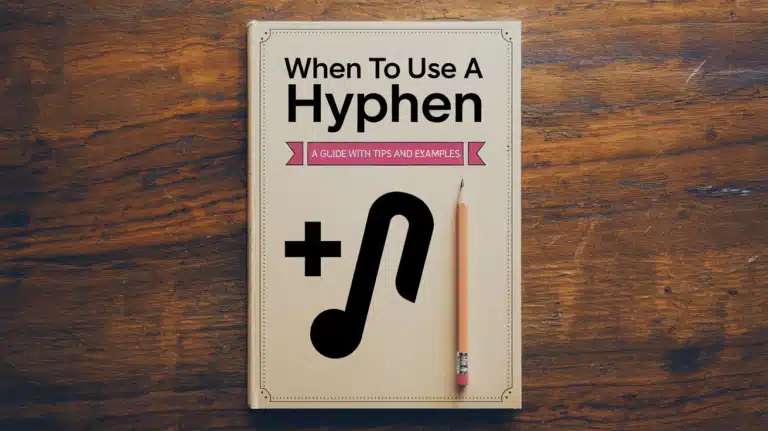Mr., Mrs., Ms., and Miss – Full Form and Meaning
When it comes to addressing people with respect, understanding the proper use of titles is essential. From formal documents to social gatherings, titles like Mr., Mrs., Ms., and Miss are used regularly to show respect and acknowledge one’s marital status or gender identity. But what do these titles really mean, and how should they be used?
In this guide, we’ll delve into the full forms of each title, their meanings, and proper usage. We’ll also explore common questions surrounding their use, offering clarity on modern etiquette. Understanding these distinctions can improve your professional communications, help you avoid mistakes on formal documents like wedding invitations, and make sure you use the proper form when addressing envelopes.
The History and Evolution of Titles
Brief Origin and Purpose of Titles
The use of titles like Mr., Mrs., Ms., and Miss dates back centuries, evolving alongside societal norms. Titles were originally created to show respect and to quickly convey marital status or social standing. Over time, these titles have been shaped by changes in culture and gender roles. For instance, Ms., which is a neutral title, emerged as a more modern form to address women without highlighting their marital status.
Cultural Significance Over Time
In many cultures, titles are more than just a form of address; they’re a way of showing respect and honoring an individual’s place in society. In Western cultures, particularly in American English and British English, these titles are used to indicate gender and, in some cases, marital status. However, these meanings have shifted over time to accommodate changing views on gender equality.
Mr. (Full Form, Meaning, and Usage)
Full Form of Mr.
The title Mr. stands for Mister, and it is used universally for men. Unlike other titles, Mr. does not indicate whether a man is married or single. It is a formal address used in both American and British English.
When and How to Use Mr.
Mr. is used in formal settings when addressing men of any marital status. Whether you’re writing a letter, addressing an envelope, or preparing a wedding invitation, Mr. remains the standard. It’s especially useful in professional environments where formality is key.
Mr. Across Different Cultures
While Mr. is prevalent in English-speaking countries, different cultures have their own variations. For example, in France, men are addressed as Monsieur (Mr.), while in Spanish-speaking countries, it’s Señor (Sr.).
Mrs. (Full Form, Meaning, and Usage)
Full Form of Mrs.
Mrs. is an abbreviation of Missus, which originally came from the word Mistress. The title Mrs. is typically used to address married women. It indicates a woman’s marital status and is often used alongside her husband’s name.
Evolution from Mistress to Mrs.
Historically, the term Mistress was used for all women, but as society evolved, the use of Mrs. became restricted to married women. The distinction allowed people to quickly identify a woman’s marital status, which was often considered important in both social and legal settings.
Common Mistakes When Addressing Women as Mrs.
One common mistake is addressing unmarried women as Mrs.. Since Mrs. specifically refers to married women, it should not be used for someone who is single or divorced unless they still prefer the title.
Read More About : Antithesis vs Juxtaposition: Mastering the Art of Contrast in Writing
Ms. (Full Form, Meaning, and Usage)
Full Form of Ms.
The title Ms. is a relatively recent development, first gaining popularity in the 20th century. It is a neutral title that does not reveal a woman’s marital status. This makes it a useful and respectful alternative for both married and unmarried women.
Rise of Ms. in the 20th Century
With the rise of the feminist movement, the title Ms. became popular as women sought an option that did not define them by their marital status. It is now widely used in both professional and personal settings.
When to Use Ms. Over Mrs. or Miss
The title Ms. is appropriate in most situations, particularly when the woman’s marital status is unknown or irrelevant. For example, Ms. is often used in business correspondence, where the focus is on professionalism rather than personal details. Many women also prefer Ms. for its neutrality.
Miss (Full Form, Meaning, and Usage)
Full Form of Miss
The title Miss is traditionally used for unmarried women, usually those who are younger. It is a title that denotes youth and marital status, but in modern times, it has become less common in professional environments.
When Miss Is Still Preferred
Although Miss is being used less in professional contexts, it is still common in social settings or when addressing younger women or girls. For example, Miss might be used by teachers or in school settings.
Changing Trends in the Use of Miss
In recent years, the use of Miss has been in decline, as many women prefer the neutrality of Ms. However, some women still choose Miss as their personal preference, particularly when they are unmarried and young.
Navigating Modern Etiquette for Titles
When and Why Title Choice Matters
The choice between Mr., Mrs., Ms., and Miss can convey important information about the person you’re addressing. While these titles may seem like small details, they matter in both formal and informal settings. Using the correct title shows respect and ensures you are honoring the preferences of the individual.
Generational Differences in Title Usage
Younger generations often prefer Ms. due to its neutrality, while older generations may stick to more traditional titles like Mrs. and Miss. Understanding these preferences can help avoid awkwardness, especially in professional or formal address situations.
Common Questions Concerning Use
Ms. vs. Mrs. Etiquette: When Ms. Is A Preferred Title
Many women, especially in professional environments, prefer Ms. as it does not disclose their marital status. In business, it’s always safer to use Ms. unless you know the woman prefers Mrs..
Why Is There an R in Mrs.?
The inclusion of the R in Mrs. can be traced back to the old English term Mistress, which was shortened over time to Missus. The R has remained in the abbreviation, even though the pronunciation has changed.
Proper Wedding Invitation Wording
When addressing a wedding invitation, it’s important to use the proper title based on the marital status and preference of the individual. For example, if a woman is married and prefers to use her husband’s last name, you would address the envelope as Mr. and Mrs. [Husband’s Last Name]. Ms. can be used for unmarried women or when you are unsure of the recipient’s preferences.
| Situation | Correct Title |
|---|---|
| Married Woman | Mrs. |
| Unmarried Woman | Miss |
| Preferred Neutral Title | Ms. |
| Married Man | Mr. |
| Unmarried Man | Mr. |
Why Do Some People Omit the Period in Mr., Mrs., Miss, and Ms.?
In American English, it’s common to include a period after Mr., Mrs., and Ms. In contrast, British English often omits the period. Both styles are correct; it’s a matter of preference and regional standards.
Examples of Title Use in Everyday Life
Formal vs. Informal Settings
In formal settings, such as a business meeting, using Mr. or Ms. is essential for maintaining professionalism. In contrast, informal settings, like social gatherings, might allow for more relaxed rules.
Titles in Digital Communication
Even in today’s digital age, titles are often used in email signatures or LinkedIn profiles. For instance, it’s common to see Ms. used in a professional email sign-off, particularly when communicating with new clients or colleagues.
Regional and Cultural Variations in Titles
Titles in British vs. American English
While both British and American English use the same titles, there are some subtle differences. As mentioned earlier, British English often omits periods, and Mrs. may be less commonly used as women increasingly prefer Ms. in both regions.
How Non-English Speaking Cultures Approach Titles
In many languages, equivalents to Mr., Mrs., and Miss exist but vary significantly. For example, in Japan, san is used as a gender-neutral honorific, and in Germany, the titles Herr (Mr.) and Frau (Mrs.) are used, with no direct equivalent to Ms..
Wrapping it Up
Understanding the full forms and meanings of Mr., Mrs., Ms., and Miss is essential for both personal and professional interactions. While these titles may seem like small details, they reflect respect and proper etiquette. Whether you’re addressing a **w






